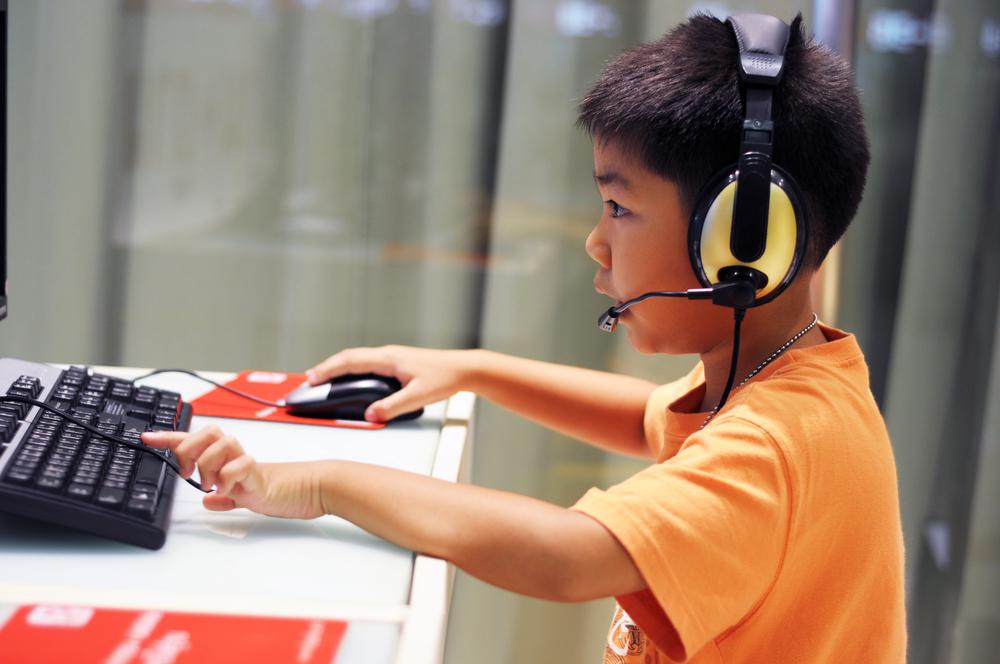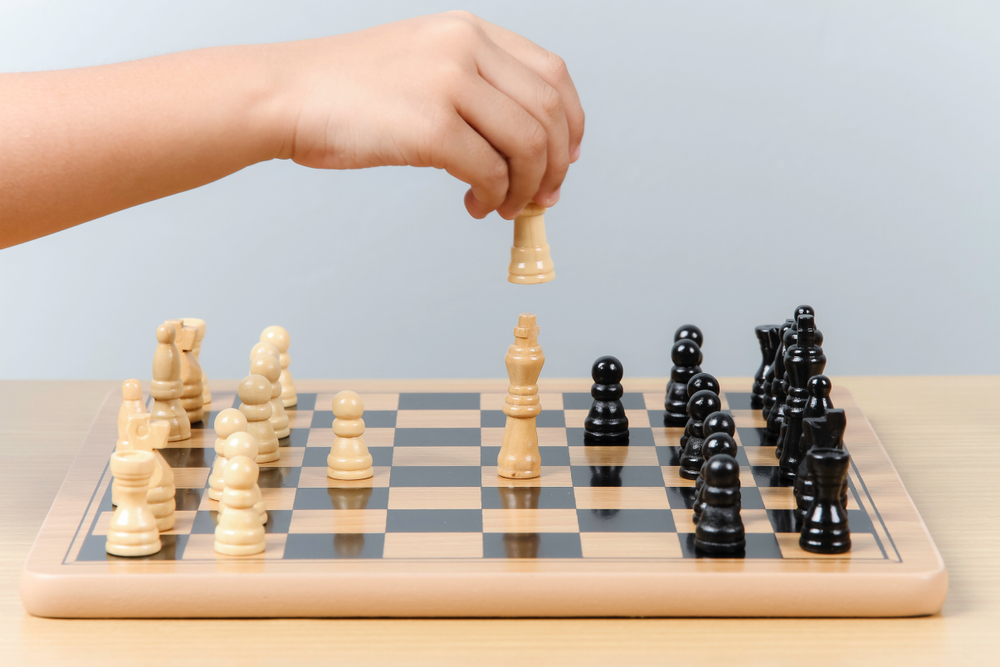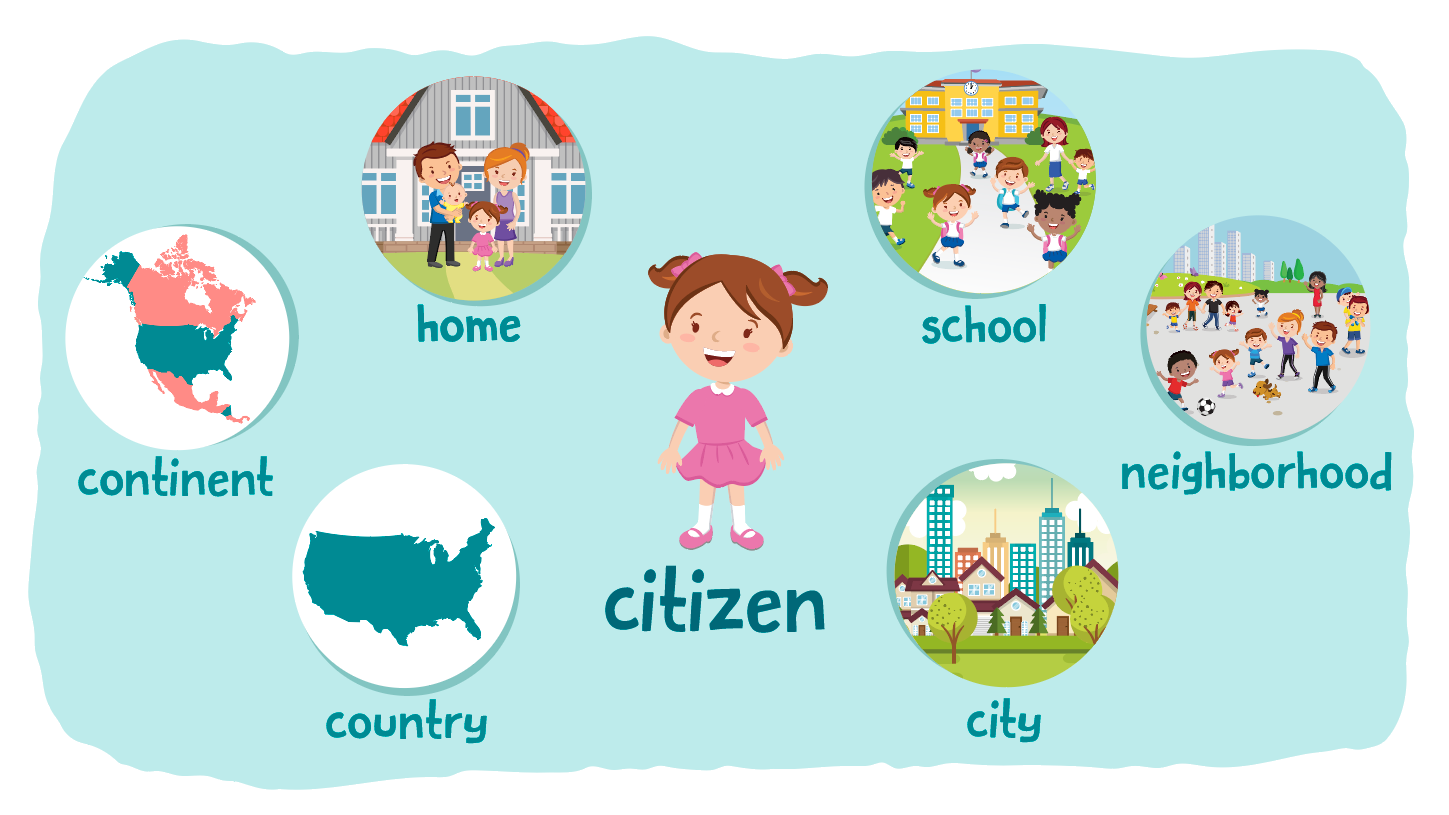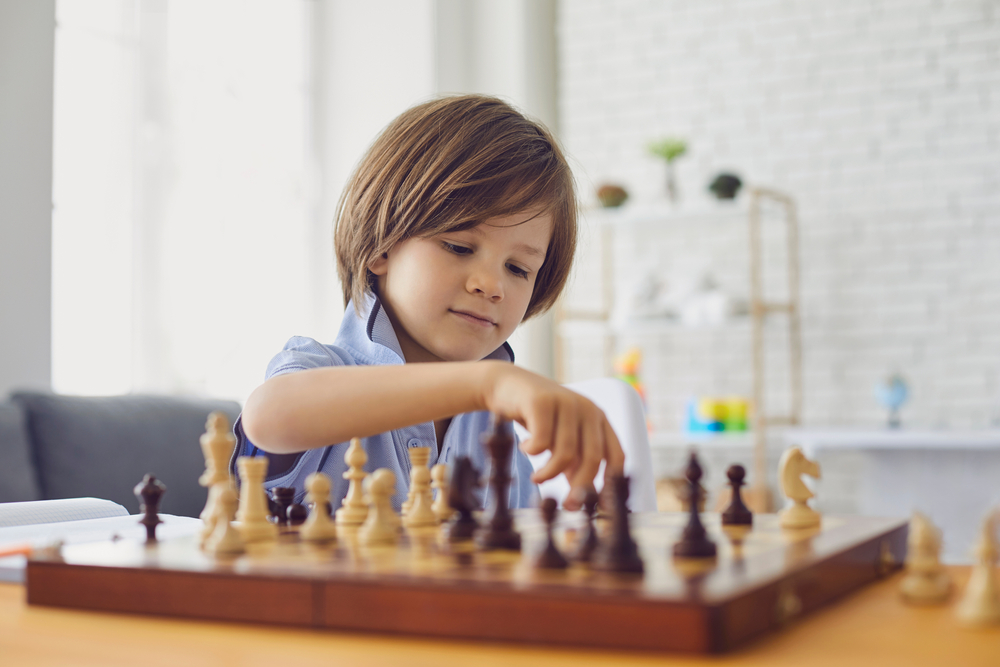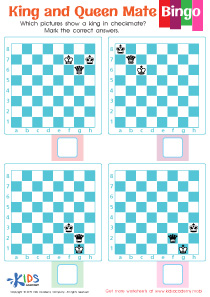Normal Chess Worksheets for Ages 5-6
54 filtered results
-
From - To
Welcome to our engaging "Normal Chess Worksheets for Ages 5-6"! Designed specifically for young learners, these worksheets introduce the exciting world of chess through fun and interactive activities. Our resources focus on basic chess concepts, piece recognition, and simple strategies, helping children build foundational skills while developing critical thinking and problem-solving abilities. Each worksheet is crafted to cater to their age group, ensuring a balance of challenge and enjoyment. Whether at home or in the classroom, our worksheets provide an enjoyable way for kids to explore chess and ignite their passion for this timeless game. Start their chess journey today!
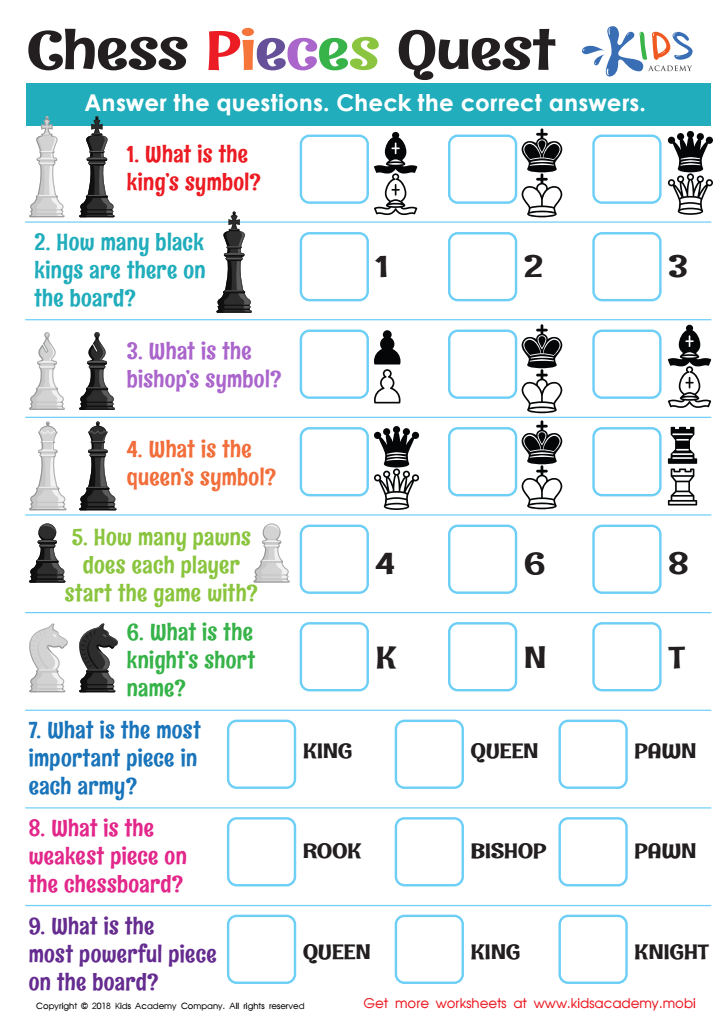

Chess Pieces Quest Worksheet
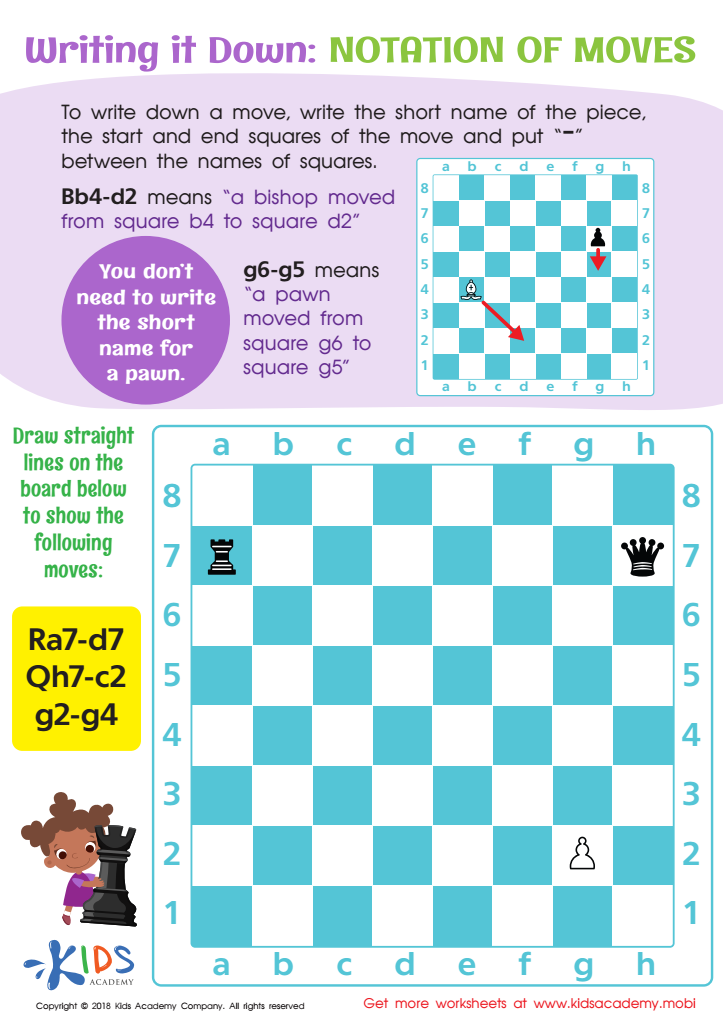

Notation of Moves Writing it Down Worksheet
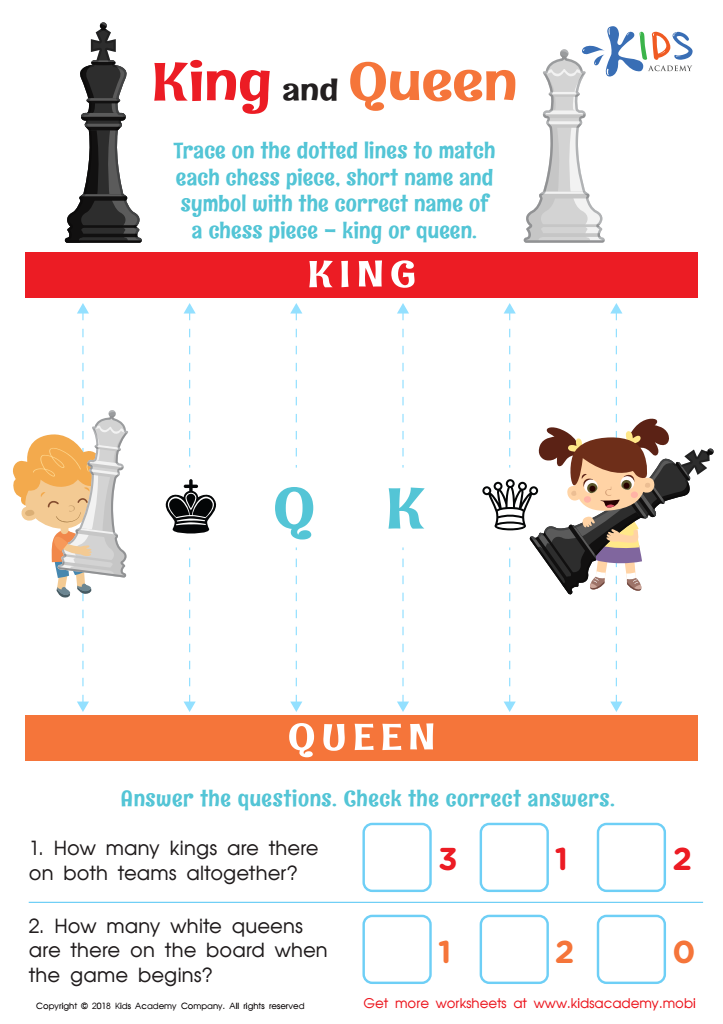

King and Queen Worksheet
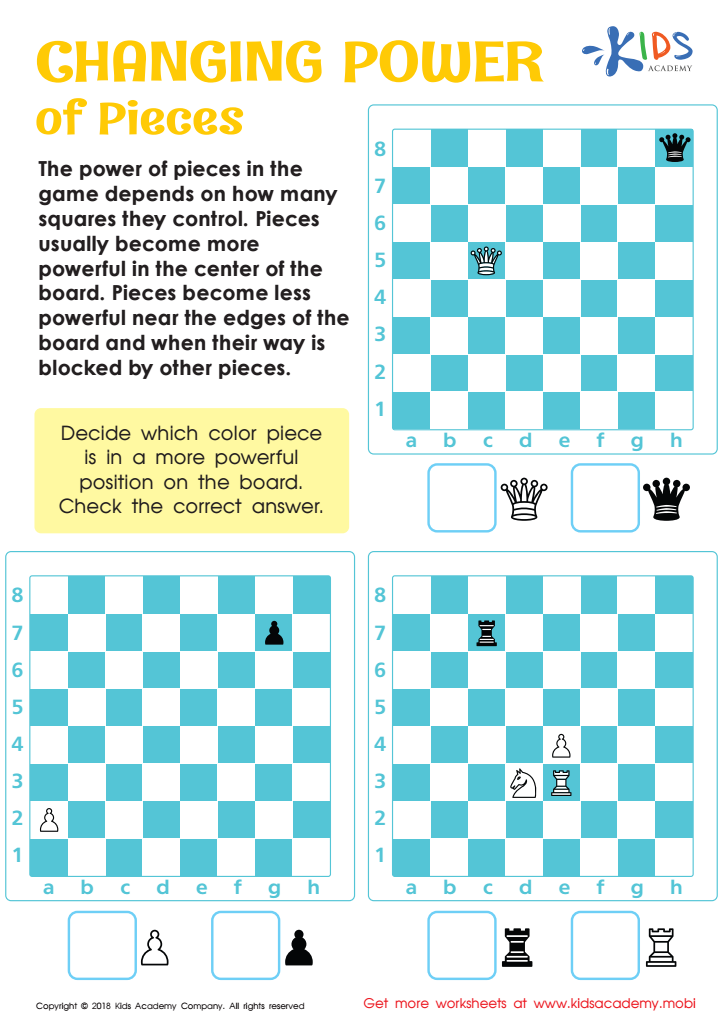

Changing Power of Chess Pieces Worksheet
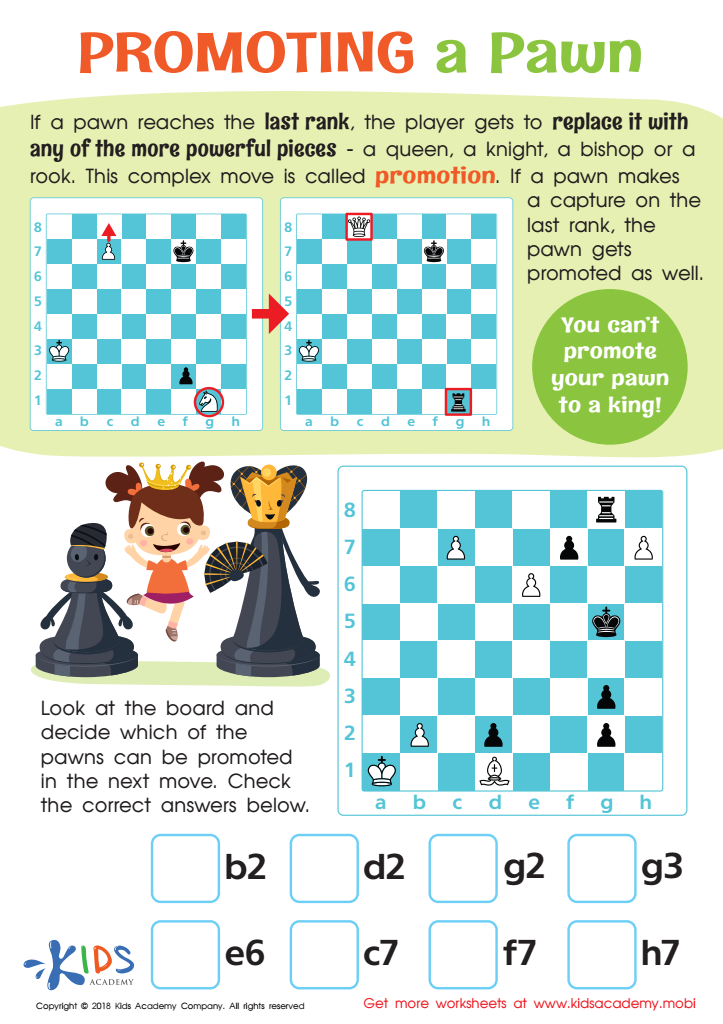

Promoting a Pawn Worksheet
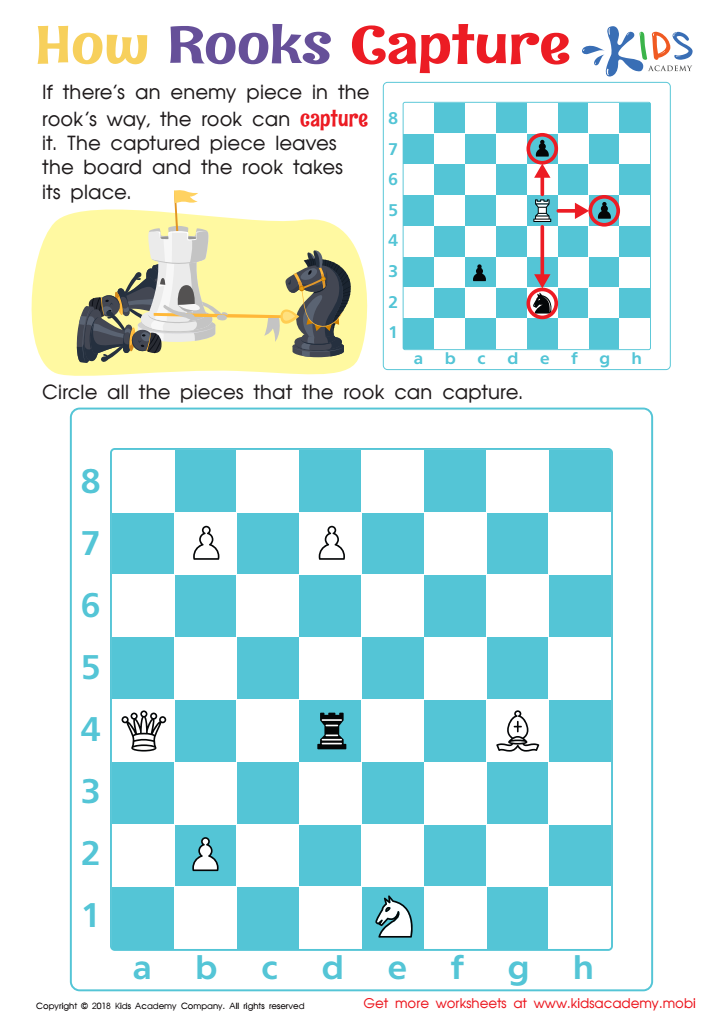

How Rooks Capture Worksheet
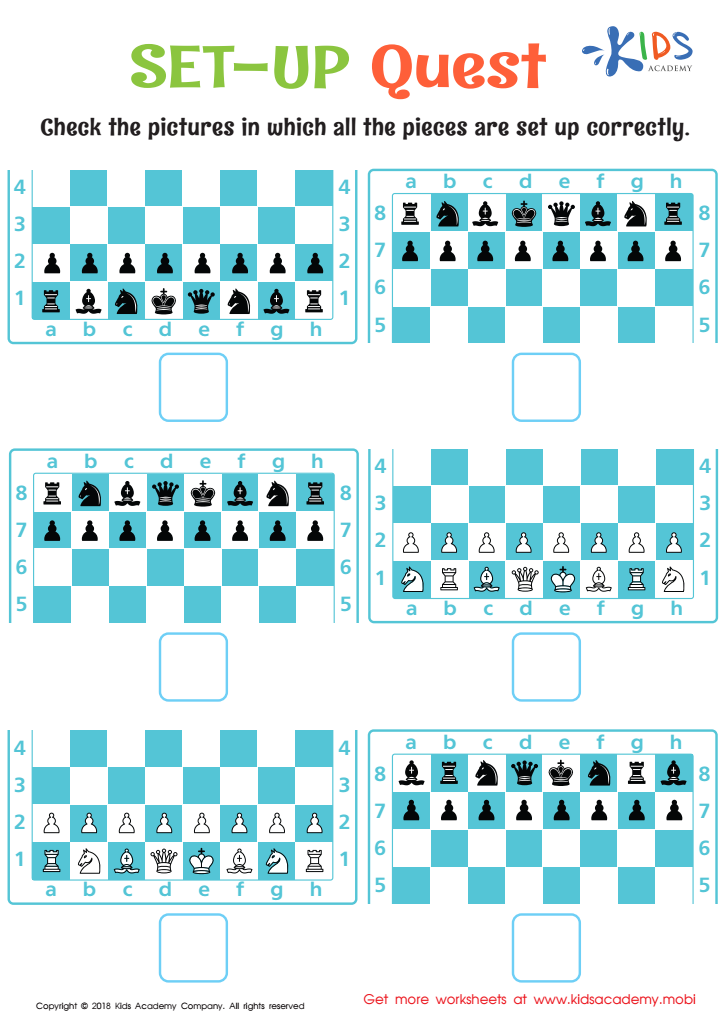

Set-up Quest Worksheet
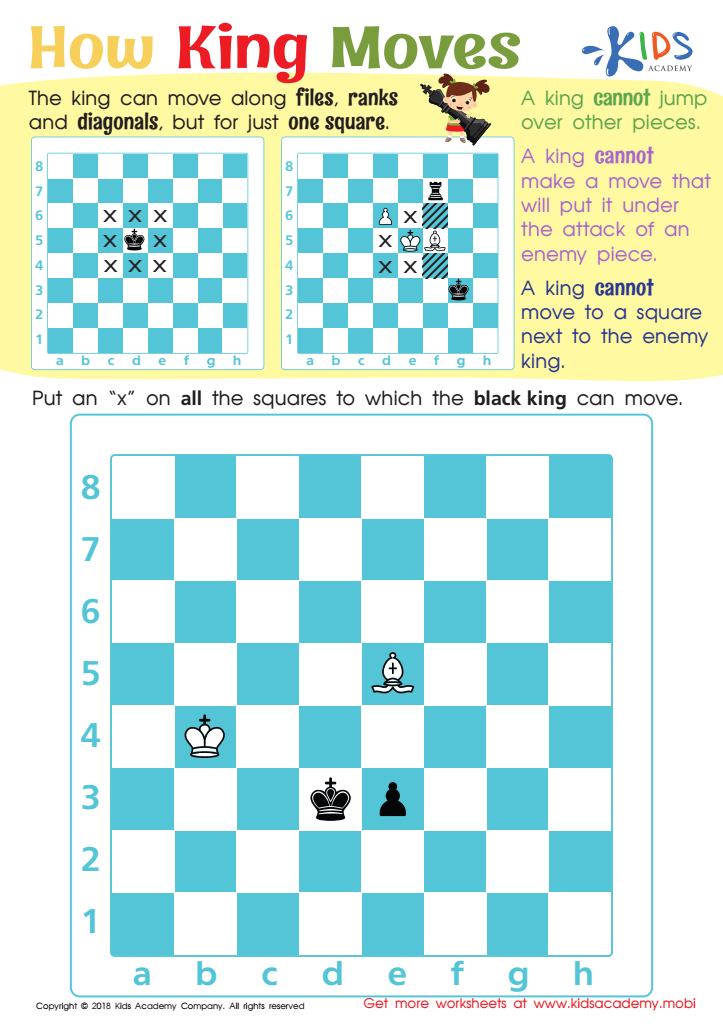

How King Moves Worksheet
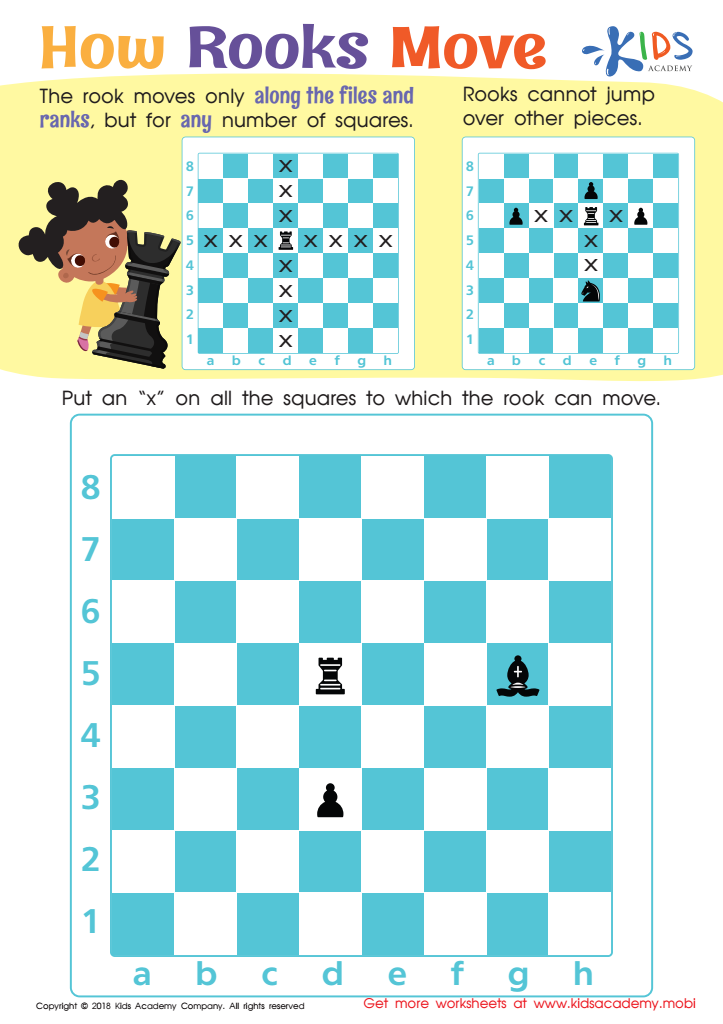

How Rooks Move Worksheet
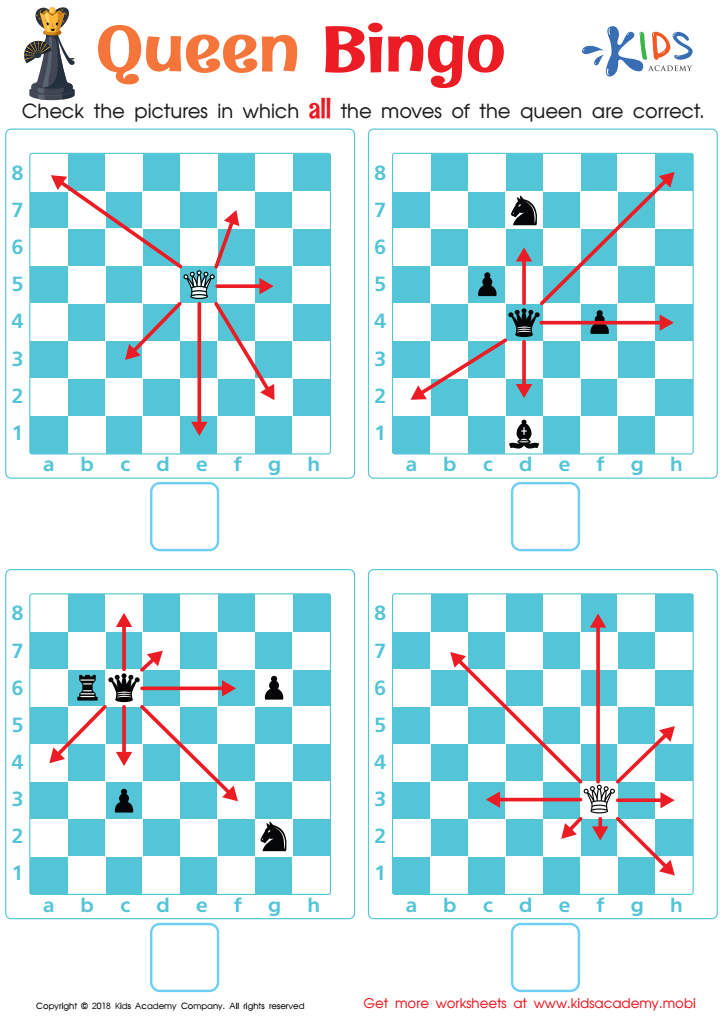

Queen Bingo Worksheet
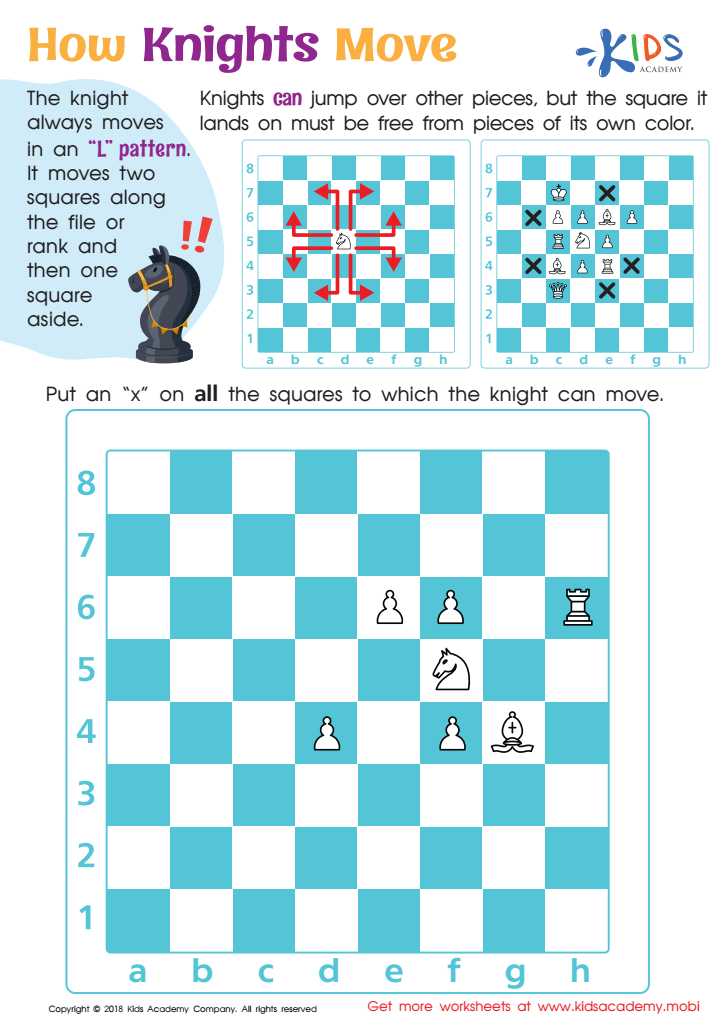

How Knights Move Worksheet
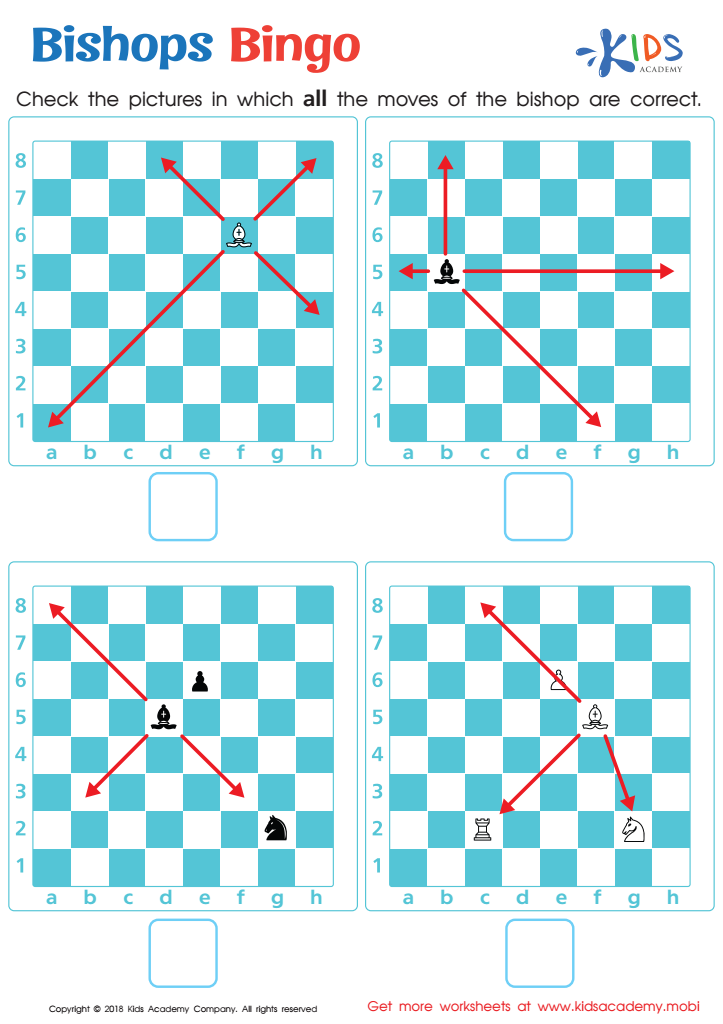

Bishops Bingo Worksheet
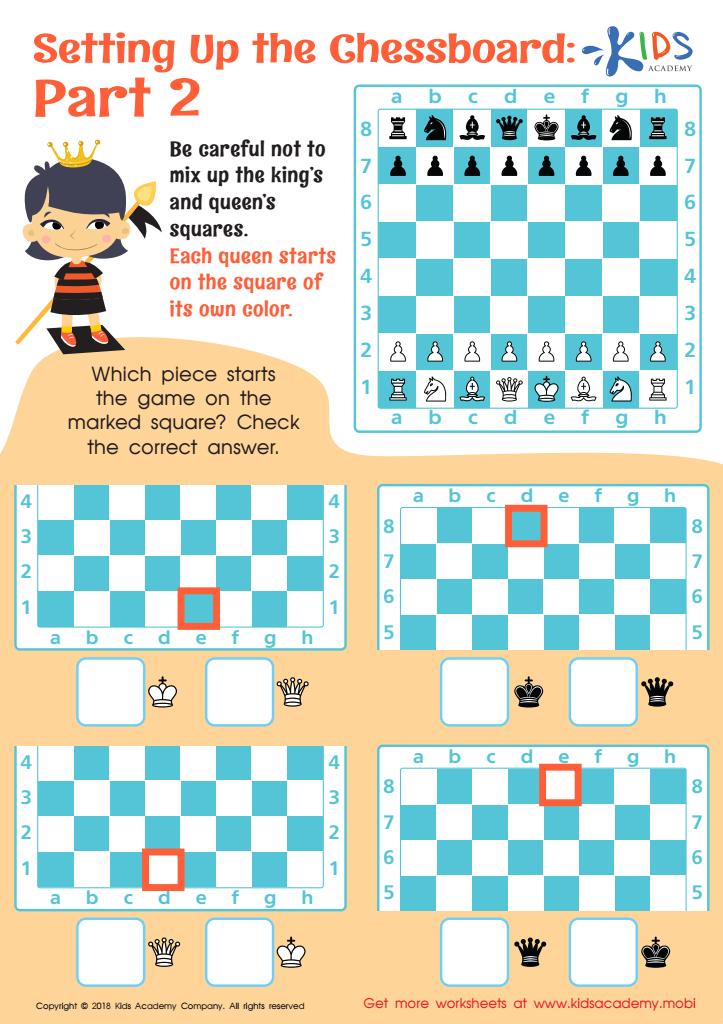

Setting up the Chessboard: Part 2 Worksheet
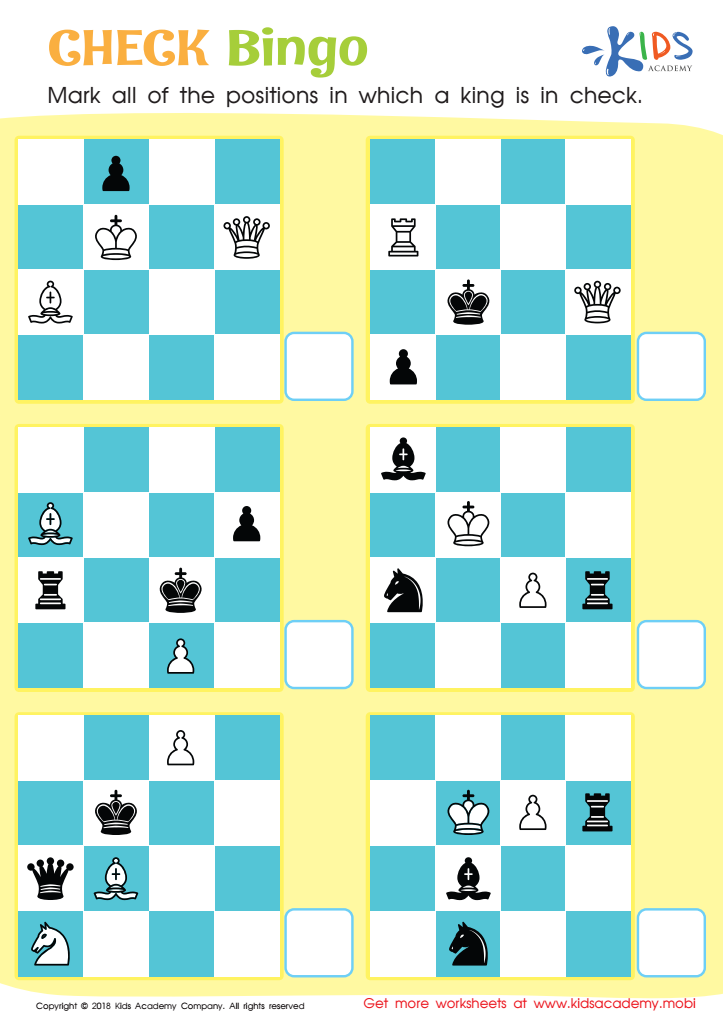

Check Bingo Worksheet
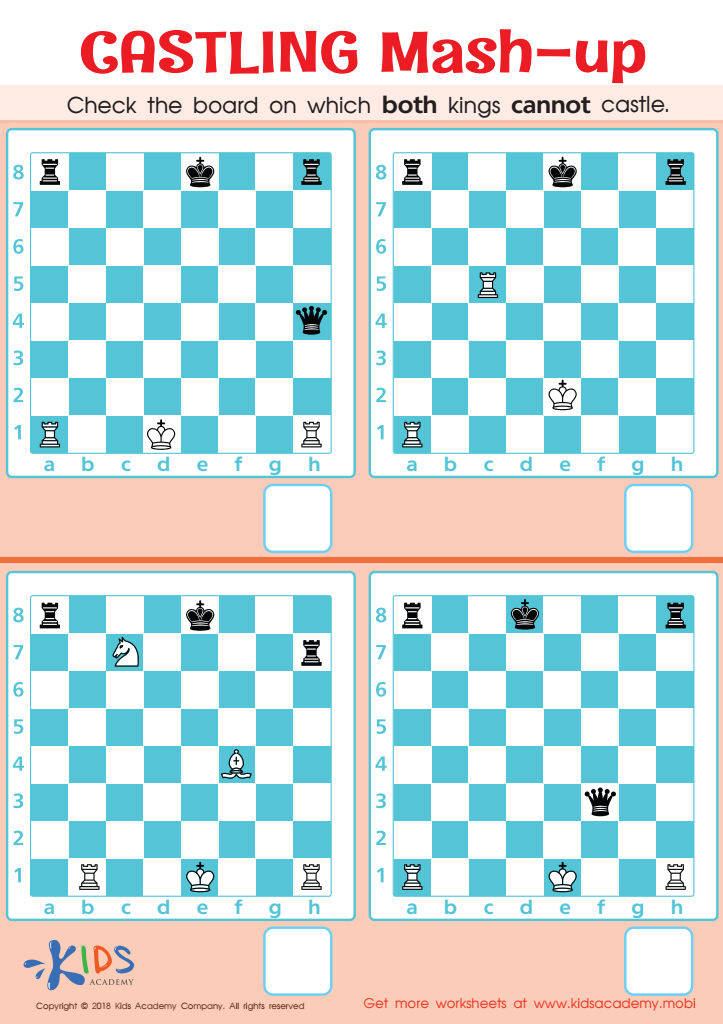

Castling Mash–up Worksheet
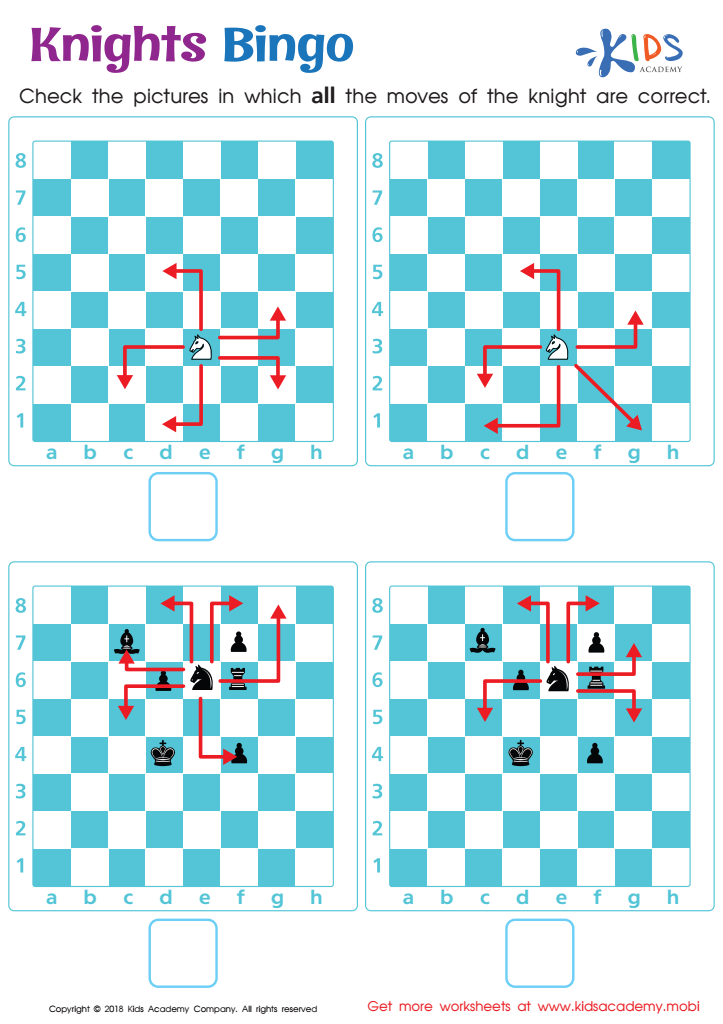

Knights Bingo Worksheet
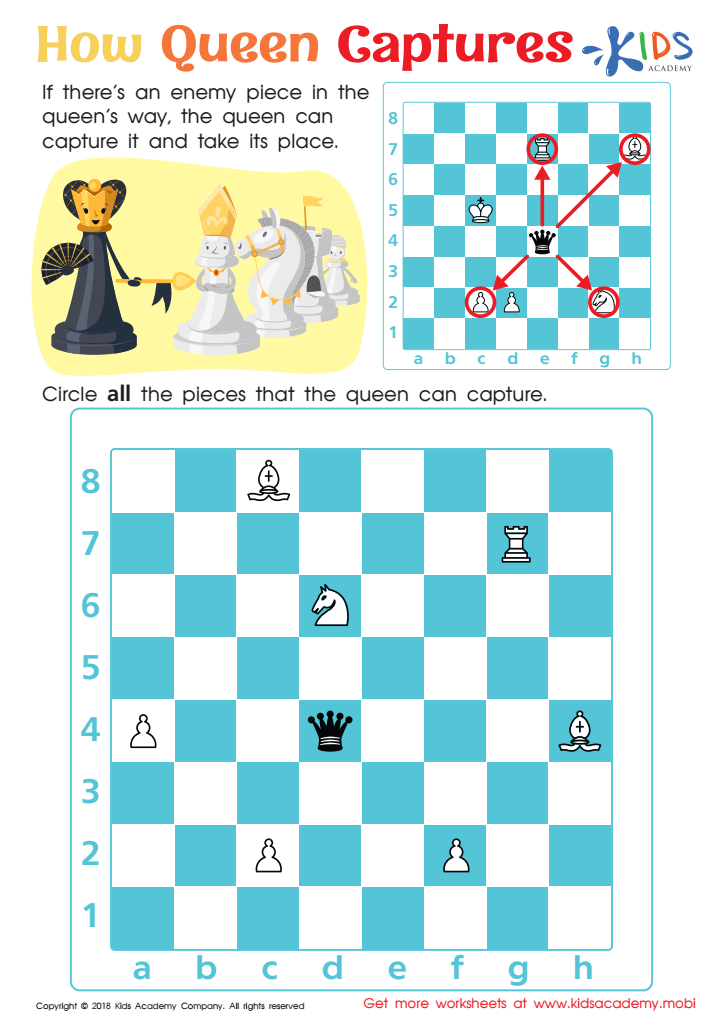

How Queen Captures Worksheet
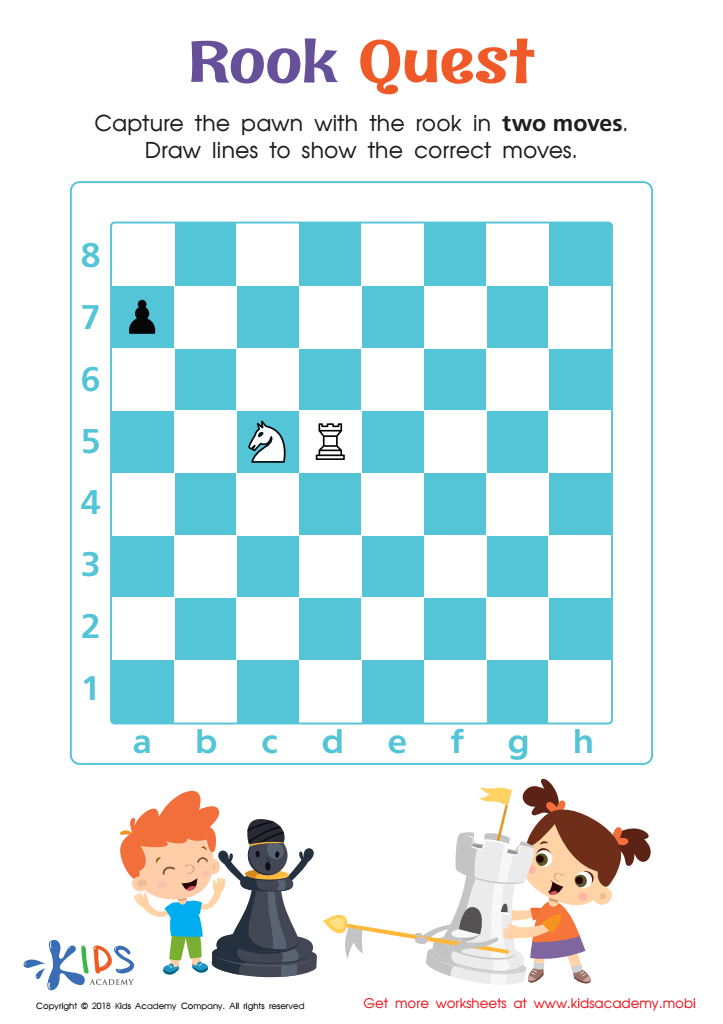

Rook Quest Worksheet
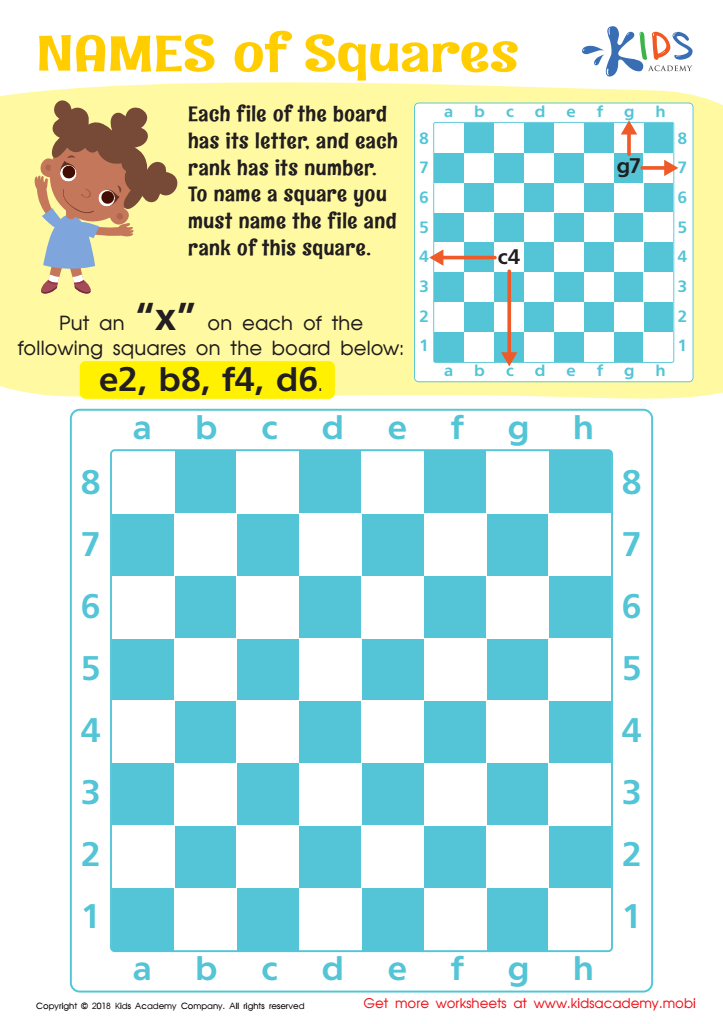

Names of Squares Worksheet
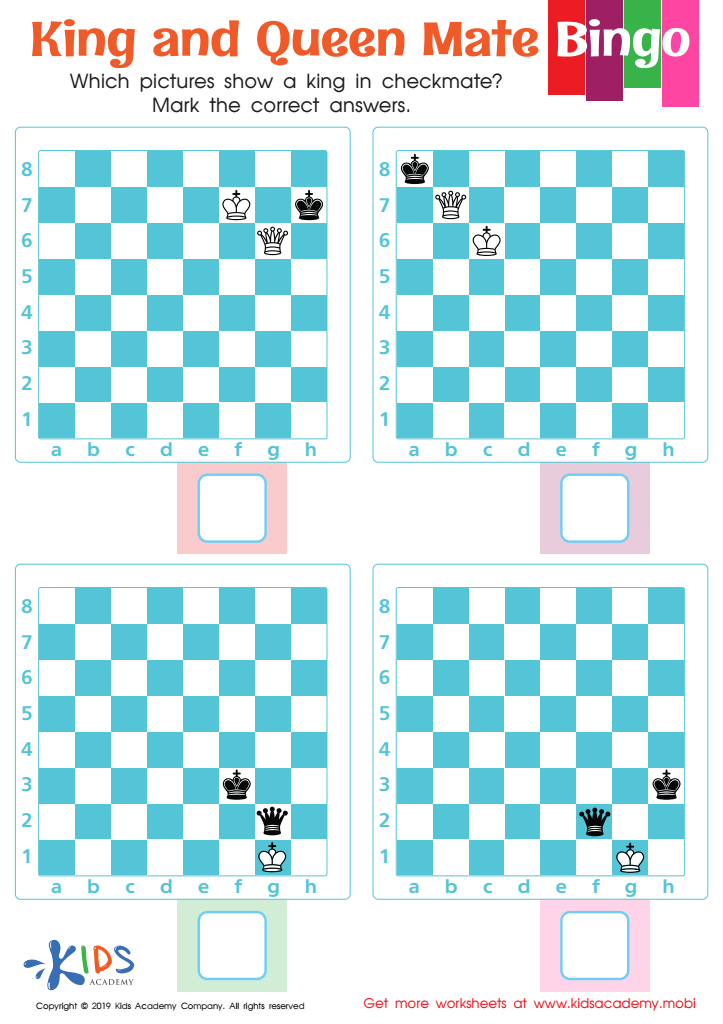

King and Queen Mate: Bingo Worksheet
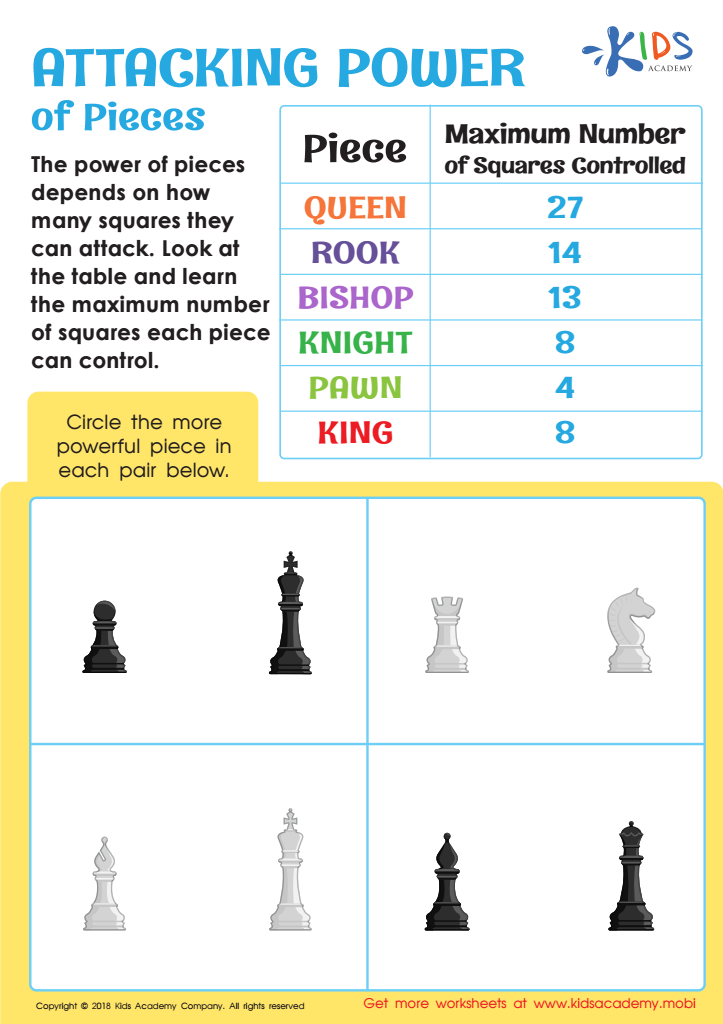

Attacking Power of Chess Pieces Worksheet
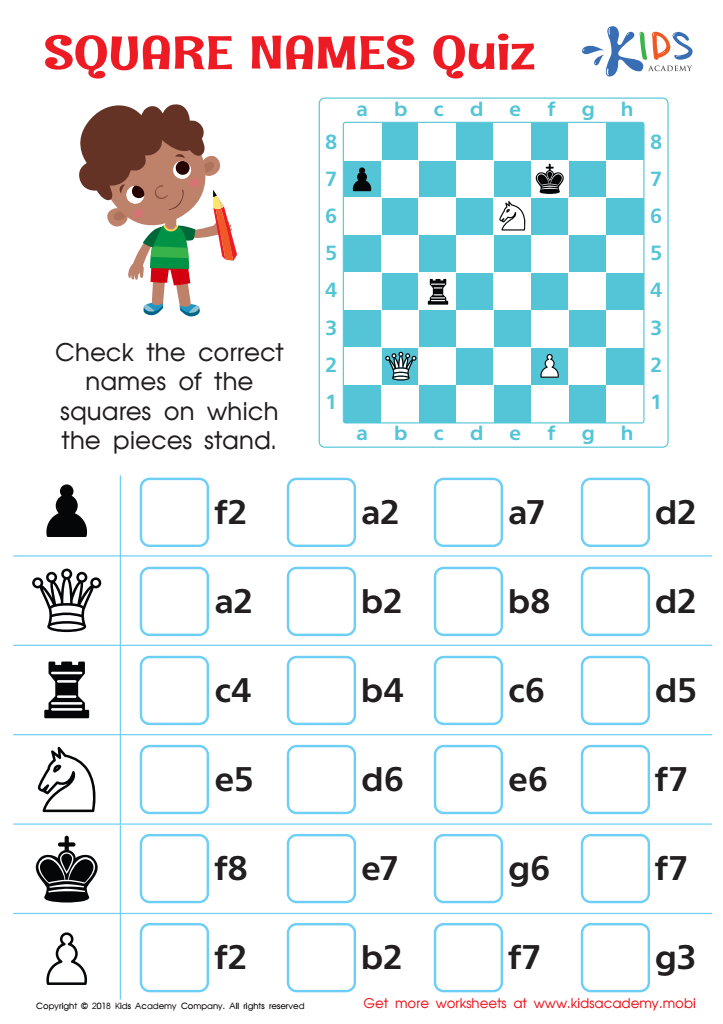

Square Names Quiz Worksheet
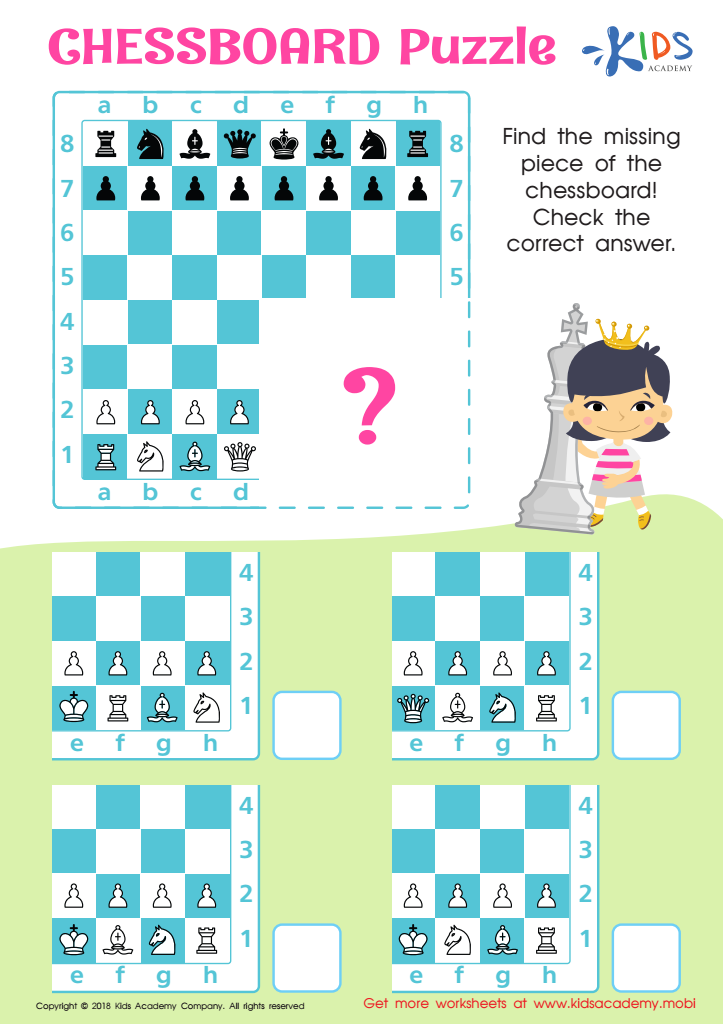

Chessboard Puzzle Worksheet
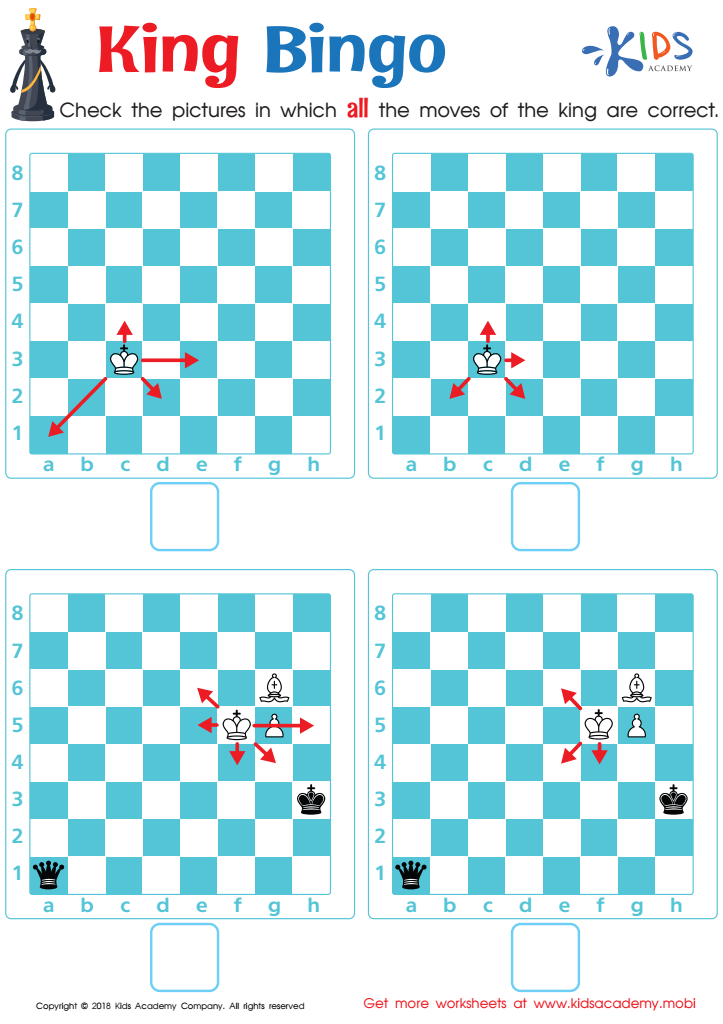

King Bingo Worksheet
Normal Chess, a simplified version of the traditional game, offers numerous benefits for children ages 5-6 that parents and teachers should embrace. At this young age, children are developing critical cognitive skills, and playing chess can significantly enhance their problem-solving abilities and strategic thinking. The game encourages logical reasoning, as children learn to anticipate their opponent's moves and think several steps ahead.
Furthermore, chess promotes patience and concentration. Young players must pay attention to the board and the game's rules, fostering focus and discipline. This is invaluable in a classroom setting, where sustained attention is crucial for learning.
Chess also teaches valuable life skills such as respect for opponents, taking turns, and accepting both win and loss graciously. These social skills are essential for personal development and future teamwork situations.
Incorporating Normal Chess into early education can also make learning fun and engaging, sparking interest in critical thinking games from a young age. By supporting children in learning to play chess, parents and teachers set a foundation for intellectual growth, social interaction, and emotional resilience, thus enriching their overall developmental experience.

 Assign to My Students
Assign to My Students






